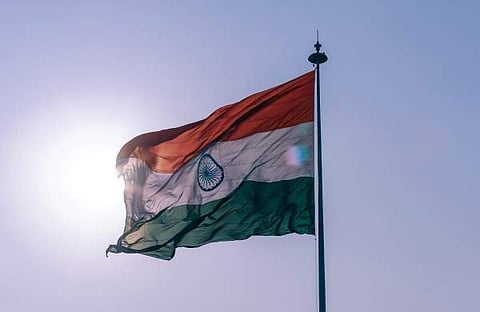

It is a reflex action for every Indian to rise when they hear the national anthem, leaving everything else that they were doing at that point. Since school, we were taught to sing the anthem and stand up every time we heard it. But do we know enough about our anthem other than the fact that it was written and composed by Nobel laureate and poet Rabindranath Tagore? Here are some lesser-known facts about 'Jana Gana Mana'.
- The myth that it was written in honour of the British monarch is not true. On December 11, 1911, the ‘Jana Gana Mana’ was written by Tagore. The very next day, Delhi Durbar was held, where the coronation ceremony of King George V and Queen Mary as the Emperor and Empress of India took place. And, because the song happened to be composed at the same time when George the Fifth visited India, the rumour that the song was an ode to the British monarch made the rounds. This rumour was put to rest by Tagore in a letter on November 10, 1937. Tagore penned a letter to Pulin Bihari Sen, which read:
“In response to that great mental turmoil, I pronounced the victory in Jana Gana Mana of that Bhagya Vidhata [ed. God of Destiny] of India who has from age after age held steadfast the reins of India’s chariot through rise and fall, through the straight path and the curved. That Lord of Destiny, that Reader of the Collective Mind of India, that Perennial Guide, could never be George V, George VI, or any other George..”
- The national anthem sung today is a shrunken version of the original. ‘Jana Gana Mana’ sung today is just one stanza of the original version that was composed by Tagore. The original song is a Brahmo hymn that features ‘five’ verses in Sanskritised Bengali and reflects the country’s independence struggle, culture and values. The formal rendition of the anthem should take 52 seconds by law, and not 54 seconds. On January 24, 1950, the song was embraced in its Hindi version by the Constituent Assembly of India and officially declared as the ‘National Anthem of India’.
- There’s no compulsion to sing the national anthem.
There is no law which states that singing the national anthem is mandatory. Moreover, if a person just prefers to stand up in silence when the national anthem is sung, it isn’t considered to be rude or insulting in any way. But, if someone intentionally causes any sort of disruption while it is being played, it obviously raises eyebrows and he/she is liable for punishment, as per the law.
- The musical notations for the English translation of our national anthem were set by Margaret, wife of poet James H Cousins, who was the principal of Besant Theosophical College in Andhra Pradesh.
- Another controversy surrounding the anthem is that only those provinces that were under British rule — Punjab, Sindh, Gujarat, Maratha, Dravid (South India), Odisha/Utkal and Bengal, were mentioned. None of the princely states — Kashmir, Rajasthan, Hyderabad, Mysore or Kerala — or the states in Northeast India, which are now integral parts of India was mentioned. However, the opponents of this proposition claim that Tagore mentioned only the border states of India to include complete India. Whether the princely states would form a part of a liberated Indian republic was a matter of debate even till independence.
